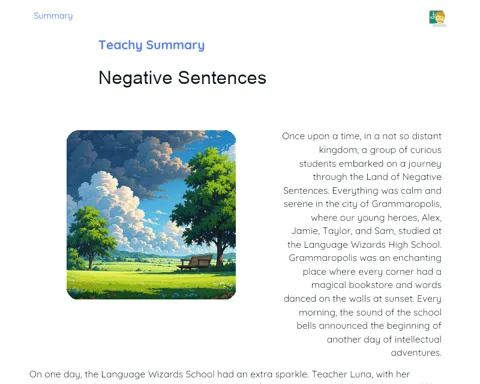Connectors: The Key to Fluid and Coherent Communication
Objectives
1. Understand the function of connectors in the English language.
2. Identify connectors in various types of texts to understand their meanings and functions.
3. Develop reading and text interpretation skills in English.
4. Promote the practical application of connectors in real contexts and job market situations.
Contextualization
Connectors are words or expressions that link ideas in a sentence or between sentences, promoting the cohesion and coherence of a text. Just like bricks in a building, connectors help structure the discourse, making communication clearer and more effective. Imagine writing a text or a professional email without connectors: the information would be disjointed, hindering understanding and the flow of the message. In English, the correct use of connectors is essential to convey your ideas accurately and logically, whether in a school essay, a work report, or a presentation. For example, in the workplace, when writing an email to a client, using appropriate connectors can help persuade and convince, as well as avoid misunderstandings.
Relevance of the Theme
In the current context, the ability to construct cohesive and coherent texts is fundamental, especially in areas such as business, marketing, and technology. Professionals who master the use of connectors are more effective in their communications and often stand out in selection processes. Moreover, clarity and precision in communication are highly valued skills in any career, making the learning about connectors an essential competence for academic and professional success.
Definition of Connectors
Connectors are words or expressions that link ideas in a sentence or between sentences, promoting the cohesion and coherence of a text. They are essential for creating clear and comprehensible communication, both in writing and speaking.
-
Connectors are linking elements between ideas.
-
They promote cohesion and coherence in texts.
-
Essential for clear and effective communication.
Types of Connectors
There are various types of connectors, each with a specific function. Some of the main types include connectors of addition, contrast, cause and effect, and time connectors.
-
Addition connectors: add information (e.g., 'and', 'also').
-
Contrast connectors: show opposition or difference (e.g., 'but', 'however').
-
Cause and effect connectors: indicate a cause-and-effect relationship (e.g., 'because', 'therefore').
-
Time connectors: indicate temporal sequence (e.g., 'before', 'after').
Use of Connectors in Sentences and Paragraphs
The correct use of connectors in sentences and paragraphs is crucial to ensure that ideas are presented logically and fluently. They help structure the text, facilitating reading and understanding.
-
Connectors organize sentences and paragraphs.
-
Facilitate reading and comprehension of the text.
-
Ensure the logical presentation of ideas.
Practical Applications
- Writing professional emails: using connectors to ensure clarity and cohesion in communication.
- Preparing reports: applying connectors to structure arguments and information logically.
- Oral presentations: using connectors to guide the audience through the ideas presented.
Key Terms
-
Connectors: words or expressions that link ideas in a sentence or between sentences.
-
Cohesion: the property of the text that ensures its parts are logically connected.
-
Coherence: the property of the text that ensures its ideas are presented consistently and understandably.
-
Addition: a type of connector that adds information (e.g., 'and', 'also').
-
Contrast: a type of connector that shows opposition or difference (e.g., 'but', 'however').
-
Cause and Effect: a type of connector that indicates a cause-and-effect relationship (e.g., 'because', 'therefore').
-
Time: a type of connector that indicates temporal sequence (e.g., 'before', 'after').
Questions
-
How do connectors help improve the clarity and coherence of a text?
-
Think of a situation where the lack of connectors caused difficulties in understanding. How would you resolve it?
-
In what way can the correct use of connectors influence the effectiveness of professional communication?
Conclusion
To Reflect
Connectors are fundamental elements in constructing cohesive and coherent texts. They not only link ideas but also help convey messages clearly and efficiently. Reflecting on what we have learned, we can see how connectors are essential in various everyday situations and in the job market. The ability to use them correctly can significantly improve our written and spoken communication, facilitating the understanding of information and avoiding misunderstandings. By mastering the use of connectors, we are better prepared to face academic and professional challenges, standing out for the clarity and precision in our messages.
Mini Challenge - Practical Connector Challenge
Put into practice what you have learned about connectors by creating a cohesive and coherent text.
- Choose a topic of your choice (for example, a recent experience, a hobby, or an interesting news item).
- Write a paragraph about the chosen topic using at least five different connectors.
- Make sure to include connectors of different types (addition, contrast, cause and effect, time, etc.).
- Review your paragraph, checking if the ideas are well connected and if the text is clear and coherent.
- Share your paragraph with a colleague and give each other feedback.



